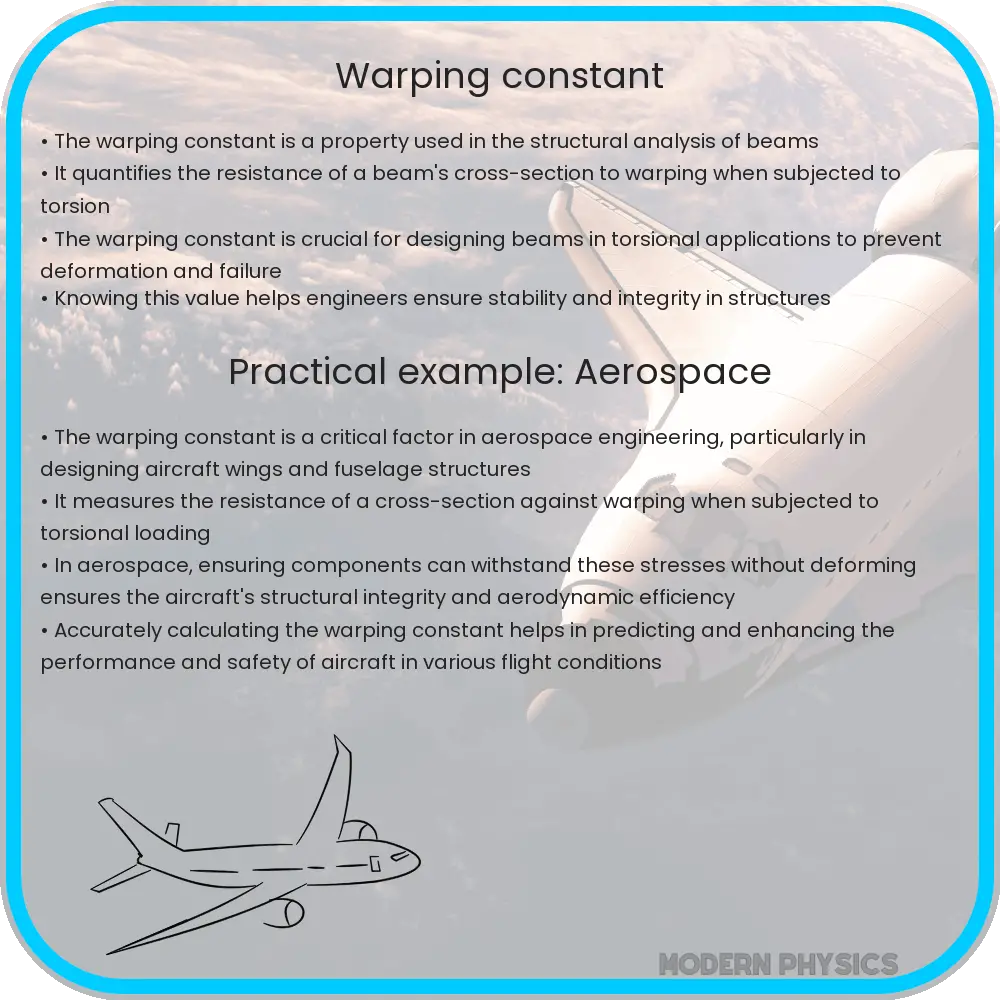Explore the critical role of the warping constant in structural analysis, its calculation, and applications in ensuring stability and strength.

Understanding the Warping Constant in Structural Analysis
The warping constant is a fundamental concept in structural analysis, playing a critical role in assessing the stability and strength of various structural elements. It is particularly crucial when analyzing non-symmetric cross-sections, such as I-beams or channels, where torsional deformation can lead to warping, a phenomenon where the cross-section distorts out of its plane.
Significance of Warping in Structural Elements
In structural engineering, understanding the behavior of beams, columns, and other elements under different loads is essential. The warping constant provides insights into how these elements will behave under torsional loads. When a structural member experiences torsion, its cross-sectional shape tends to twist or warp, which can cause additional stresses and deformations not accounted for by simple torsion calculations.
Calculating the Warping Constant
The calculation of the warping constant, typically denoted as Iw or Cw, depends on the geometry of the cross-section. For standard shapes, such as I-beams, the warping constant can often be found in structural engineering handbooks or calculated using specific formulas. For more complex or custom shapes, numerical methods like finite element analysis may be required to accurately determine the warping constant.
Applications in Design and Analysis
Understanding the warping behavior of a structural element is vital for ensuring its strength and stability under torsional loads. This knowledge helps engineers design elements that can resist such deformations, thereby maintaining the integrity of the structure. In modern structural design, the warping constant is utilized in advanced analysis methods to predict the response of structural members under complex loading conditions, including torsional loads that lead to warping.
Conclusion
In summary, the warping constant is a key parameter in structural analysis, offering insights into the torsional behavior of structural elements. Accurate calculation and understanding of this constant are imperative for the design and analysis of structures, especially those with non-symmetric cross-sections susceptible to warping under torsional loads. The next section will delve into the mathematical formulation of the warping constant, its practical implications in structural design, and advanced computational methods for its determination.
Mathematical Formulation of the Warping Constant
The warping constant, Iw, is mathematically defined based on the cross-sectional geometry of the structural element. For a standard I-beam, it can be calculated using the formula:
Iw = ∫A y2z2 dA
where y and z are the coordinates of an infinitesimal area element dA relative to the centroid of the cross-section. This integral is evaluated over the entire area A of the cross-section.
Practical Implications in Structural Design
In practical design, the warping constant is used to calculate stresses and deformations in structural elements subjected to torsion. These calculations are crucial for designing elements that can resist torsional loads without undergoing excessive deformation or failure. Engineers use these values to ensure that structures, such as bridges, skyscrapers, and industrial frames, maintain their integrity and safety under various loading conditions.
Advanced Computational Methods
For complex or custom-shaped cross-sections, advanced computational methods like finite element analysis (FEA) are often employed to determine the warping constant. FEA allows for a more accurate representation of the cross-section and can simulate the torsional response under various loading scenarios. This method is particularly beneficial in the design of bespoke structural elements where standard formulas are not applicable.
Conclusion
The warping constant is a pivotal parameter in structural analysis, vital for understanding and predicting the behavior of structural elements under torsional loads. Its accurate calculation, whether through standard formulas or advanced computational methods, is essential for the design and analysis of a wide range of structural systems. As architectural designs become more complex and the demand for resilient structures increases, the role of the warping constant in ensuring the safety and stability of structures continues to grow. Consequently, a thorough grasp of this concept is indispensable for structural engineers and designers in their quest to create safe, efficient, and innovative architectural marvels.
